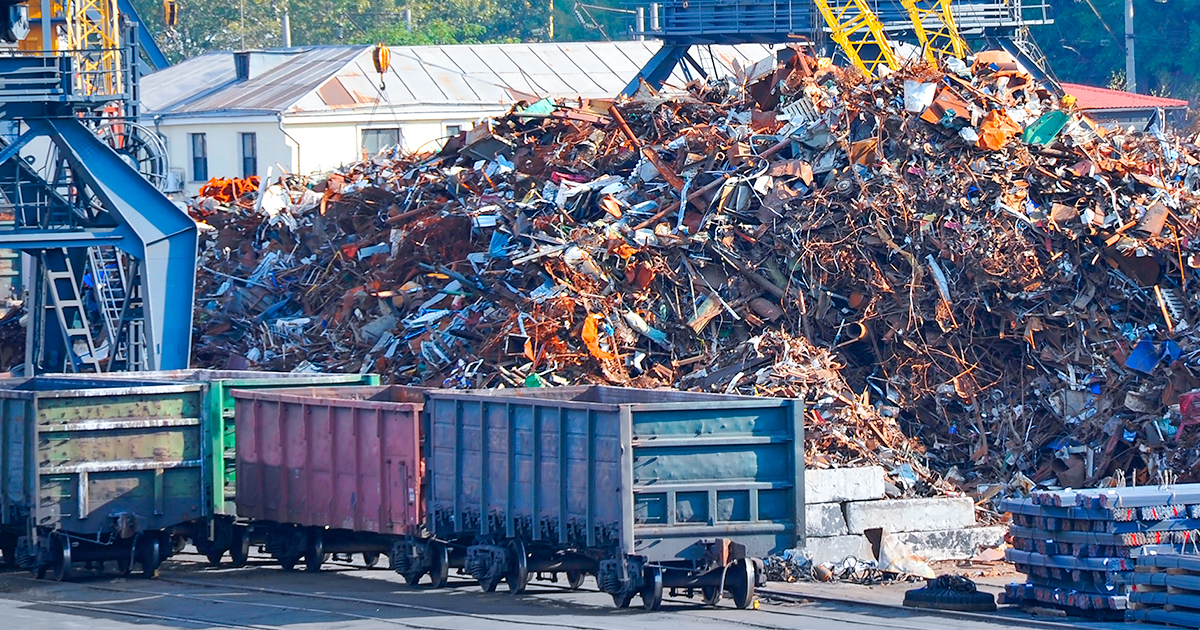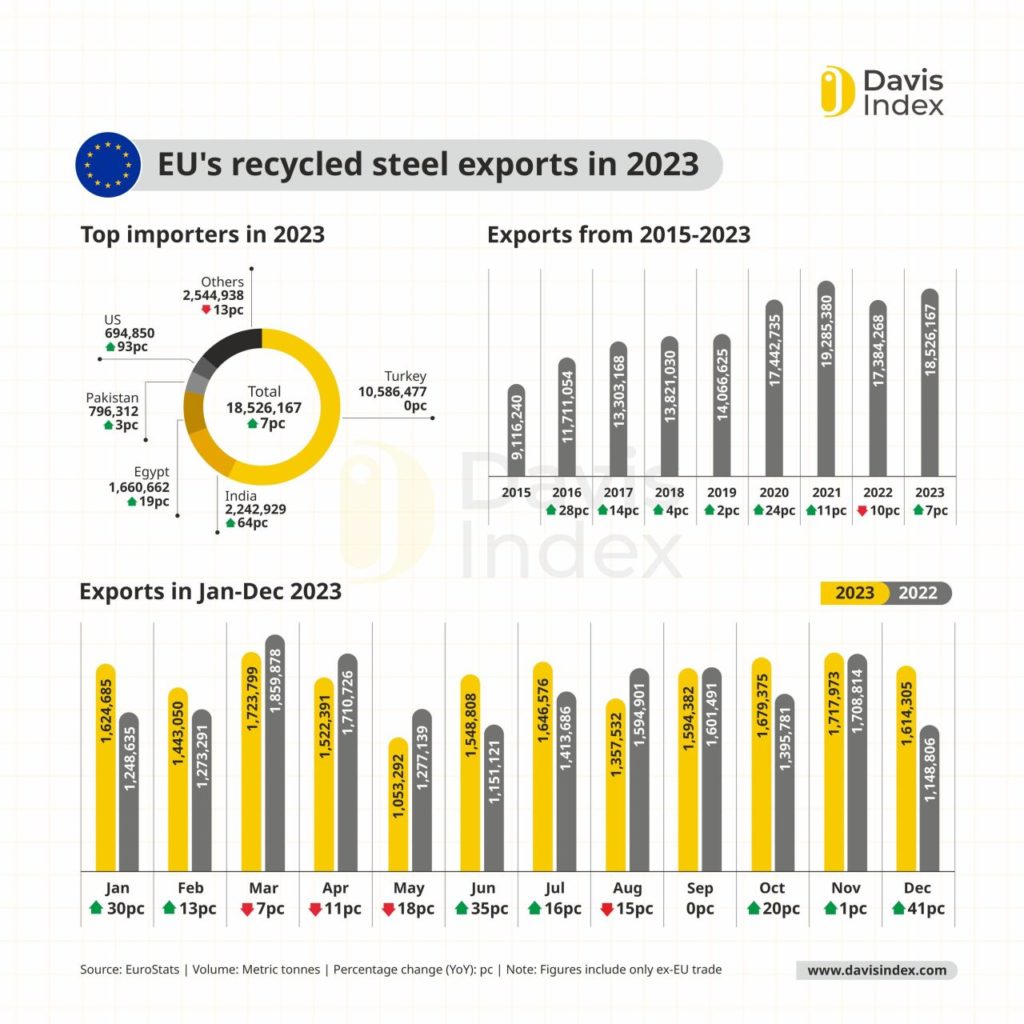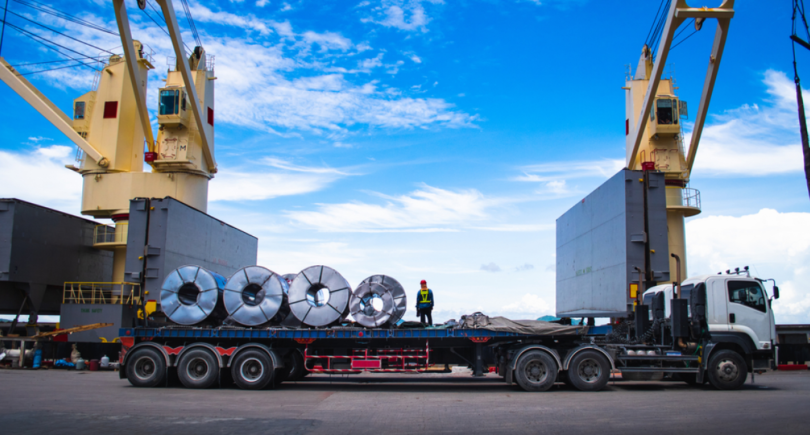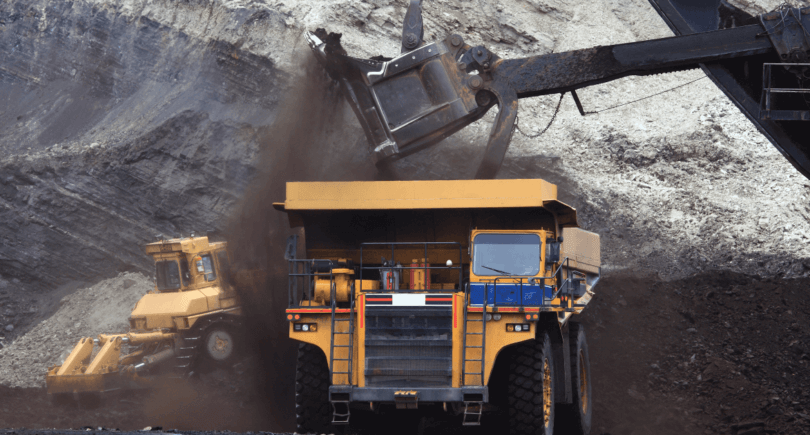
News Global Market export 3765 23 February 2024
The main consumer of raw materials is Türkiye – 57.1% of total exports of raw materials
Exports of scrap from the European Union in 2023 grew by 7% y/y – to 18.53 million tons compared to 2022. In 2022, exports fell by 10% y/y for the first time after more than 6-year upward trend. This is evidenced by data from Eurostat, Davis Index reported.
In December 2023, EU scrap exports totaled 1.61 million tons, up 41% from December 2022, but down 6% from November. The average monthly export volume during the past year was 1.54 million tons compared to 1.45 million tons in 2022. At the same time, the maximum volume of raw materials was shipped in March – 1.72 million tons (-7% y/y), and the minimum in May – 1.05 million tons (-18% y/y).
The main consumer of raw materials last year, traditionally, was Turkiye ª 10.59 million tons (+0% y/y), or 57.1% of total exports. Next are India – 2.24 million tons (+64% y/y), Egypt – 1.66 million tons (+19% YoY), Pakistan – 796.3 thousand tons (+3% y/y), USA – 694.85 thousand tons (+93% y/y).

EU steelmakers reduced steel production by 7.4% in 2023 compared to 2022 – to 126.3 million tons. In December 2023, the indicator increased by 2.7% compared to December 2022 – to 9.1 million tons.
Greenhouse gas emissions in the EU in the third quarter of last year decreased by 7.1% compared to the same period in 2022 – to 787 million tons (CO2 equivalent). Over the same period, EU GDP remained stable, registering small fluctuations (-0.2% y/y). The energy and gas supply sector was the largest source of emissions with 23.7% of the total. Households accounted for 6.5% of emissions and industry for 4.9%.
As GMK Center reported earlier, the European Commission recommends that the EU reduce net greenhouse gas emissions by 90% by 2040 (compared to 1990 levels). This climate target will be discussed with the European Parliament and Member States, and the next European Commission will put forward legislative proposals on this basis.
According to Axel Eggert, CEO of the European Steel Association EUROFER, EU steelmakers support the bloc’s goal of climate neutrality by 2050. The industry has launched more than 60 projects that, if effectively supported, will ensure significant emissions reductions by 2030.




